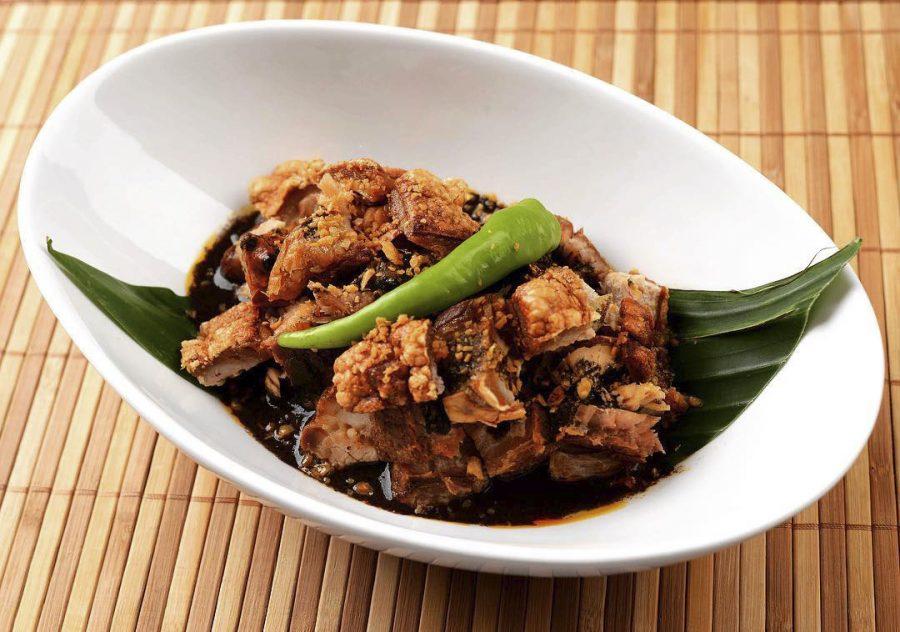NY-Untraditional Thanksgivings
Dinuguan a traditional Filipino pork dish typically served with rice cakes. A dish of NYU students searching for a taste of home. (via instagram.com)
November 20, 2017
Thanksgiving is just around the corner, and for many families, that means making space in the fridge for the 10-pound turkey and the casserole dishes of mashed potatoes and stuffing.
For other NYU students and their families, though, traditional Thanksgiving dishes don’t make the cut. Whether it’s because of dietary restrictions or cultural influences, this American holiday is transformed into something unique in many households.
I remember the Latin flair that influenced the Thanksgiving dinners of my childhood. My family would join my mother’s relatives at a table that still featured the traditional turkey as the centerpiece, but all around it, I could find congri, yuca con mojo and platanitos maduros. These side dishes are all part of the daily diet of my native island, Cuba.
Congri is the Cuban version of rice and beans, where the two main ingredients are cooked in the same kettle or pot to give the rice its distinct black color.
Yuca, or cassava in English, is what the tapioca balls in your bubble tea are made from, and mojo is the sauce that accompanies the yuca, usually made with olive oil, onions, parsley and garlic. Last but certainly not least, platanitos maduros are fried sweet plantains.
While side dishes are the stars of my Thanksgiving, Tisch senior David Scherker talks about how turkey fits into the special way his family celebrates Thanksgiving.
“I have a vegetarian household so we don’t have too much meat during our Thanksgiving meal,” Scherker said. “We have some vegetarian substitutes for meat such as Tofurky, which is a tofu-based turkey.”
Tisch sophomore Ana Grace Fangayen puts a Filipino twist on her Thanksgiving. Originally from Baguio City, Philippines, Fangayen and her family came to America when she was 10 years old.
“We didn’t have turkey or mashed potatoes because that wasn’t something that we would normally eat,” Fangayen said. “During the holidays we would either cook a lot of Filipino food like spring rolls, noodles, rice, barbeque, stuff like that, or we would go to a Filipino restaurant and do catering.”
Last year, Fangayen suggested that her family do a traditional Thanksgiving meal side by side with their Filipino one.
“My family enjoyed it a lot because they’re also fans of that type of food, so it was kind of a nice change to what we’ve normally been doing,” she said.
One of Fangayen’s favorite Filipino dishes is Dinuguan, which she remembers eating during special occasions growing up.
“It’s pretty much chopped up pork with cooked pig blood,” Fangayen said. “The texture is kind of like mud, but the way that we season it and dress it, it doesn’t taste like what it actually is.”
Dinuguan is typically served with puto, or steamed rice cakes.
“When I was younger and when I would have the dish during my birthday, I would dip the puto in the pig blood dish, and it was so good,” Fangayen said.
For Fangayen, getting to celebrate Thanksgiving in both the traditional and the Filipino style has a lot of personal meaning.
“It was definitely representative of the struggle of trying to assimilate ourselves in American culture because on one hand, we want to be part of the tradition here in America, but we also want to include our own identity into that tradition,” she said. “I’m celebrating an American tradition but I’m also enjoying my culture at the same time.”
A version of this article appeared in the Monday, Nov. 20 print edition. Email Laura Rubio at [email protected]



























































































































































